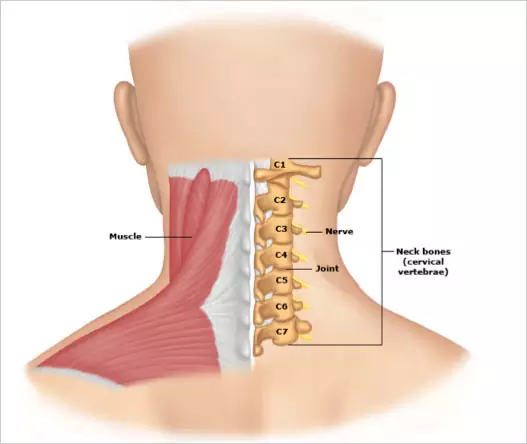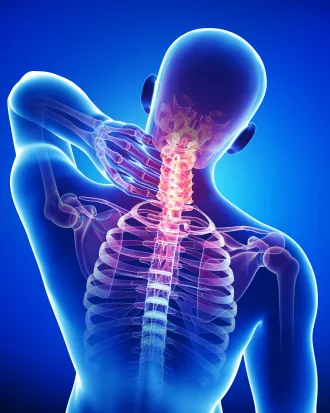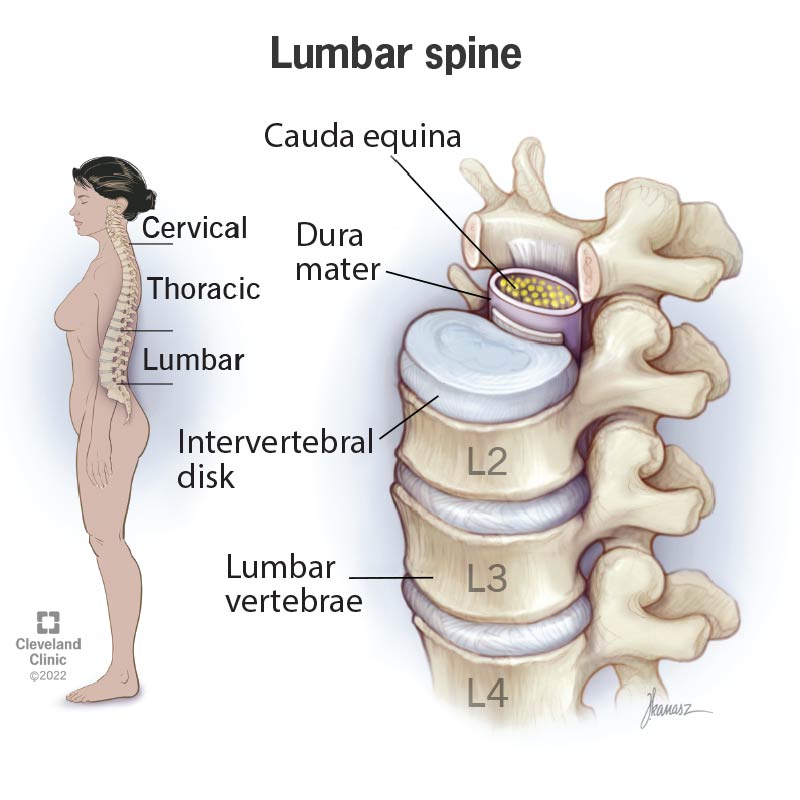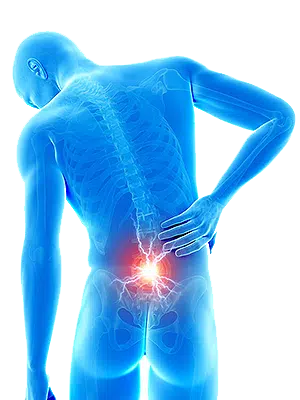Neck Pain
Neck Pain/Cervical Pain
(wikipedia)
Neck pain (or cervicalgia) is a common problem, with two-thirds of the population having neck pain at some point in their lives.[1]
Neck pain, although felt in the neck, can be caused by numerous other spinal problems.
Neck pain may arise due to muscular tightness in both the neck and upper back, or pinching of the nerves emanating from the cervical vertebrae. Joint disruption in the neck creates pain, as does joint disruption in the upper back.
The head is supported by the lower neck and upper back, and it is these areas that commonly cause neck pain. The top three joints in the neck allow for most movement of your neck and head. The lower joints in the neck and those of the upper back create a supportive structure for your head to sit on. If this support system is affected adversely, then the muscles in the area will tighten, leading to neck pain.


Causes & Treatment
Neck pain can come from numerous causes, from whiplash, to disc herniations, to facet syndrome, to muscle spasm or peripheral nerve impingement. A thorough examination and detailed history is essential to differentially diagnosing what is the cause of a patient’s neck pain.
Our office treats spinal pain using a comprehensive approach, which can include Active Release Techniques, Graston, spinal decompression therapy, spinal manipulation, combined with home stretching and ultimately core stabilization exercises.
Related Articles:
Lumbar Pain
Non-specific low back pain or lumbago (pron.: /lʌmˈbeɪɡoʊ/) is a common musculoskeletal disorder affecting 80% of people at some point in their lives. In the United States it is the most common cause of job-related disability, a leading contributor to missed work, and the second most common neurological ailment — only headache is more common.[1] It can be either acute, subacute or chronic in duration. With conservative measures, the symptoms of low back pain typically show significant improvement within a few weeks from onset.
The majority of lower back pain is referred to as non specific low back pain and does not have a definitive cause.[3] It is believed to stem from benign musculoskeletal problems such as muscle or soft tissues sprain or strains.[1] This is particularly true when the pain arose suddenly during physical loading of the back, with the pain lateral to the spine. Over 99% of back pain instances fall within this category.[4] The full differential diagnosis includes many other less common conditions.


Causes & Treatment
Lumbar pain can come from numerous causes, from whiplash, to disc herniations, to facet syndrome, to muscle spasm or peripheral nerve impingement. A thorough examination and detailed history is essential to differentially diagnosing what is the cause of a patient’s neck pain.
Our office treats spinal pain using a comprehensive approach, which can include Active Release Techniques, Graston, spinal decompression therapy, spinal manipulation, combined with home stretching and ultimately core stabilization exercises.

